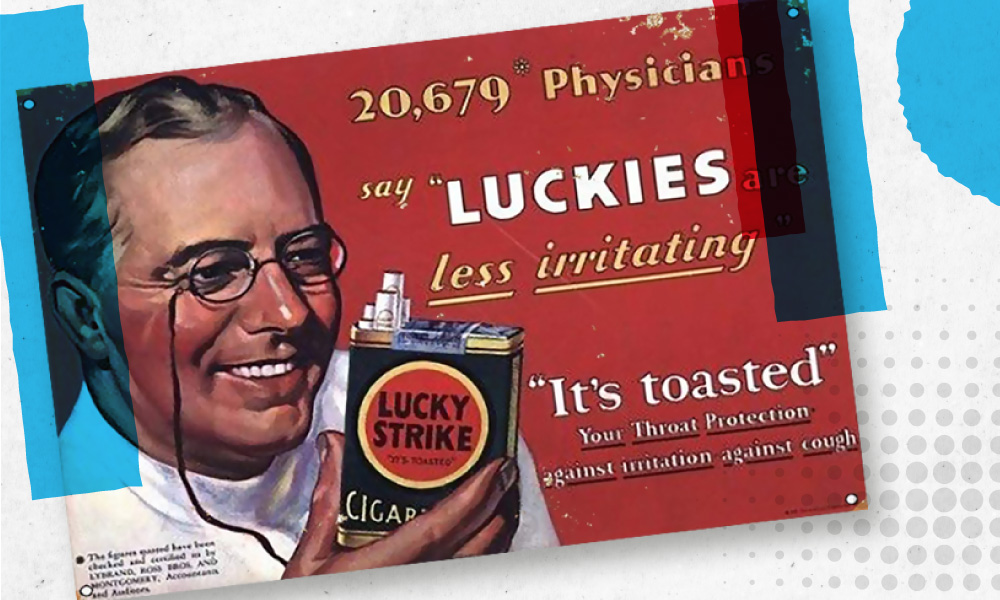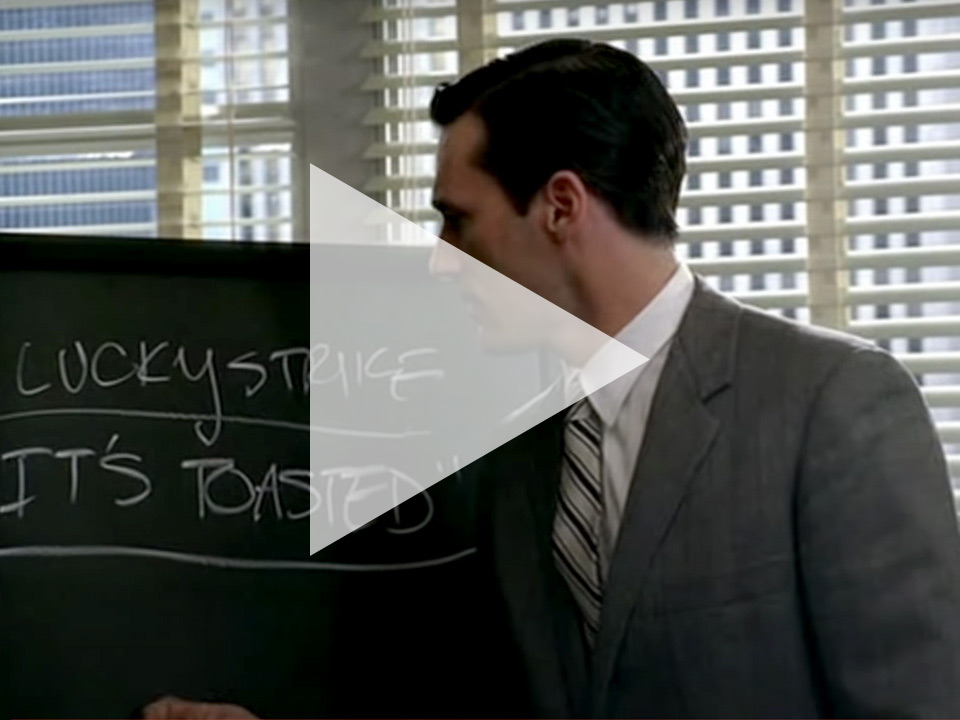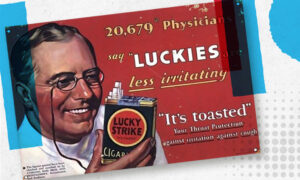I cannot resist the temptation to mention a masterclass from the series Mad Men. United States, 1960s. The Federal Trade Commission has just linked tobacco use to the onset of serious diseases. Damn, what’s plan B? The president of Lucky Strike scowls at the advertisers seated at his table: “Die? What the hell are you talking about? Are you insane? I can’t tell people OK, if you’re going to die anyway, die with us.”
He’s right, that is not the kind of thing that can be said. But creativity can bring out a submerged aspect. The outcome of the briefing is surprising: “Lucky Strike. It’s toasted.” “But everybody else’s tobacco is toasted,” objects the president. “No, everybody else’s tobacco is poisonous.”
Lucky Strike. It’s toasted.
From seeing to seeing how
This is how Don Draper crystallises the concept: all advertising is based on one thing, happiness. Happiness and a nice pair of glasses with rose-tinted lenses with which to look at the world, I would add. And this is how advertising pampers us with optimism. Zero traffic, parking in front of the shop, super healthy food, old age defeated, the perfect family. Whoever we are, we’re okay. One kick of a football and racism is gone. Everything’s gonna be alright.
It is the extension of Pollyanna’s Glad Game. Being obsessively grateful. Certain cognitive scientists have seen fit to call it idiotic optimism. Pollyanna syndrome, described in 1978 by Matlin and Stang, is a selective behaviour that tends to deny, remove and not communicate the negative aspects of situations. An upgraded version of “turn the other cheek”: Pollyanna is actually grateful for the slap in the face because it shows her how beautiful a non-violent world would be.
Maybe advertisers exaggerate a little with their optimism. A smartphone will not make us irresistible and real cities do not look like the ones shown in commercials. With smoking, there is no longer a problem: no Don Draper can advertise it these days, but I would like to reflect on the fact that there is a harmless area in which lightness and imagination can contribute to good communication.
Present perfect or future conditional?
But what is good communication?
First of all, it’s the kind that does not replace the product. The cognitive perimeter that a good advertiser must know includes what I call the “if zone”. What might happen if: if traffic disappeared, if smartphones made us attractive.
The tenses we use distinguish us from Pollyanna.
Good communication is a hypothetical period, not a vain promise. Communication that measures reality with serious and intellectually honest tools is also good. The widespread fear of contagion is not one of these tools. Rose-tinted lenses applied over a solid grounding on changing habits and the propensity to consume in times of Covid, on the other hand, are.
Enjoy it, it’s just fantasy
Are you wearing bright magenta clothes because they are fashionable this year? I doubt it. Do you drink gallons of miracle yoghurt so you can live to 120? Do you invest your entire salary in anti-ageing creams to look younger than your kids? If we were to do these things, it would be us who had a problem, not the advertising. Within the confines of a good advertising strategy, we can do anything.






